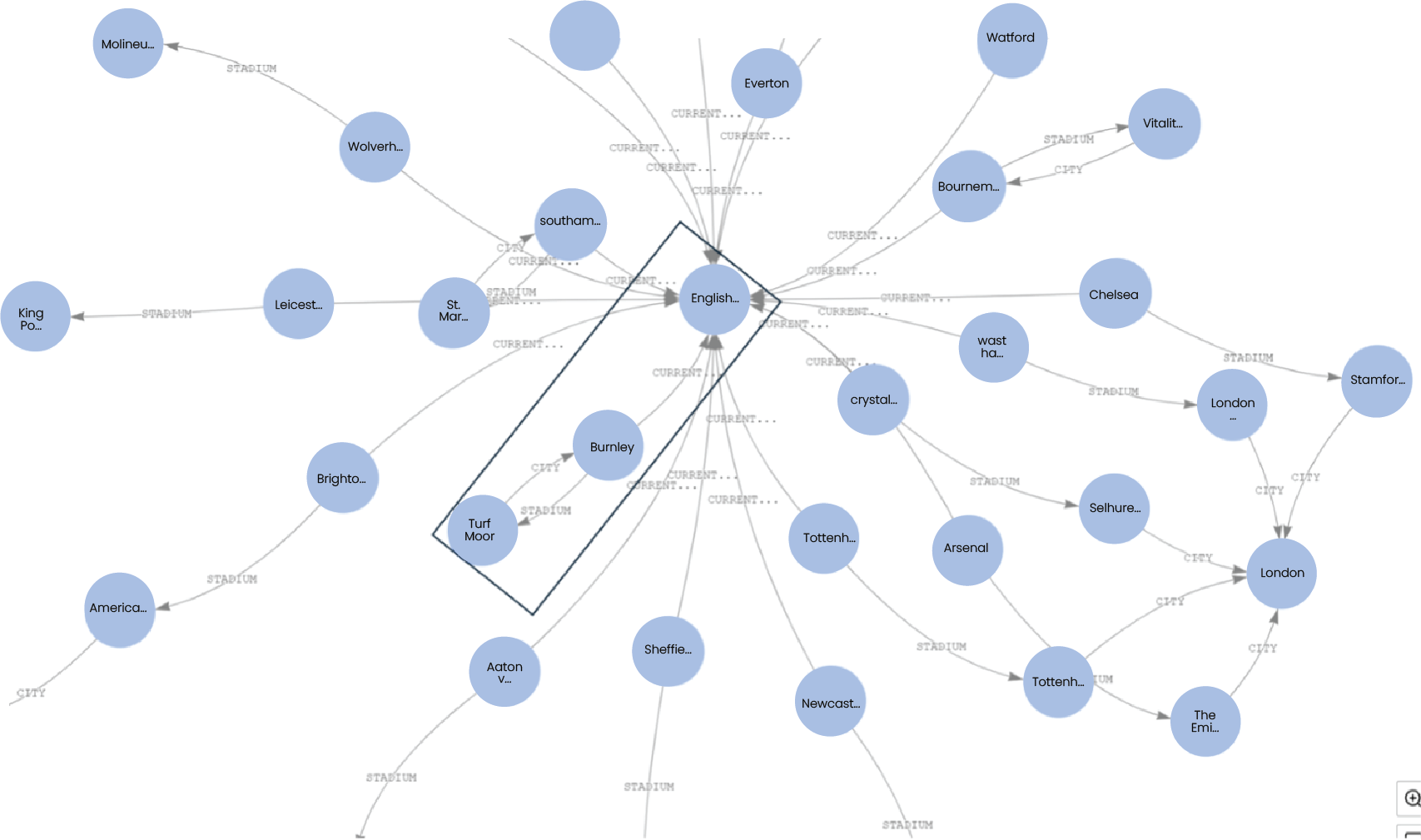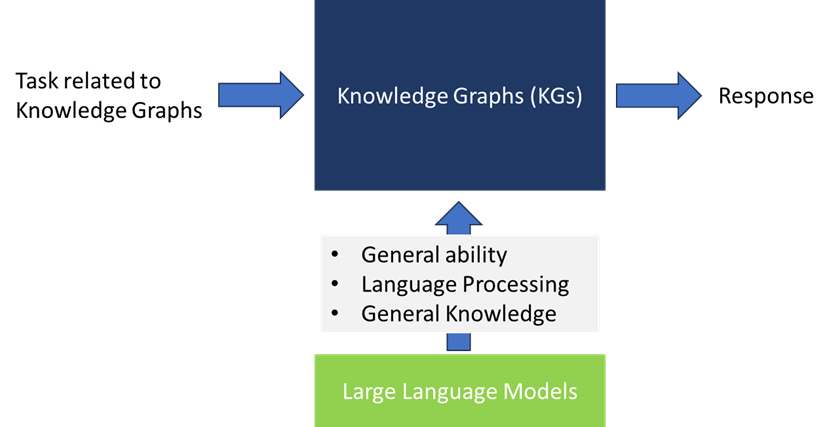The Power of Knowledge Graphs to Improve the Relationship Understanding in Large Language Models
February 26, 2024
In the rapidly changing world of artificial intelligence and advanced language models, knowledge graphs are making a big impact on how information is organized and processed. A knowledge graph is a carefully organized way of representing information, capturing the connections between different elements like relationships, entities, and attributes in a specific area. This goes beyond traditional ways of handling data by bringing together bits of information to create a web of knowledge that reflects the complex dynamics of the real world.
Decoding the Essence of Knowledge Graphs:
Entities:
Entities are the foundation of a knowledge graph, representing a wide range of things within a specific area. They can be anything from people and places to events and abstract ideas. Entities capture the core of the information being modelled in the knowledge graph.
Relationships:
Relationships in a knowledge graph act like the connective tissue, revealing the connections between entities. These connections showcase a complex network of associations, adding to the overall richness and context that defines the knowledge graph.
Attributes:
Attributes enhance entities in a knowledge graph by adding extra details. These details could include properties, features, or descriptive elements, enriching our understanding of the characteristics present in each entity.
Figure 1: Illustrates an application of a knowledge graph, showcasing the relationship among English Premier League (EPL) stadiums and cities. In the above EPL graph, we start from Turf Moor stadium, located in the city of Burnley, which is currently being used for the English Premier League (EPL).
The Dynamic Power of Connectivity:
The real power of a knowledge graph lies in its capacity to create connections, revealing deep insights in the data it contains. By carefully linking entities through relationships, a knowledge graph builds a dynamic network that mirrors the nuanced interactions present in the real world. This interconnectedness enables nuanced and context-aware interpretations of data, going beyond the constraints of traditional data structures.
Search Engines:
Knowledge graphs play a crucial role in enhancing the abilities of search engines. By understanding the connections between search queries, entities, and relevant information, search engines can provide results that are not only accurate but also contextually relevant.
Recommendation Systems:
In recommendation systems, knowledge graphs play a vital role in identifying related items or content based on user preferences and behavior. This integration improves the personalization of recommendations, resulting in a more tailored user experience.
Semantic Understanding:
Knowledge graphs play a crucial role in enhancing the capabilities of language models by contributing significantly to semantic understanding. They achieve this by mapping the semantics of words and concepts, enabling language models to comprehend context. This, in turn, leads to the generation of more coherent and relevant responses.
Additionally, knowledge graphs are important in advancing large language models.
Empowering Language Models with Knowledge Graphs:
An essential approach to enhance the capabilities of language models is through the integration of knowledge graphs. By harnessing the natural language processing capabilities of these models, extensive text data is analysed to create transparent knowledge graphs. These graphs encapsulate entities, relationships, and attributes, providing language models with a structured representation of knowledge. This integration ensures that language models can navigate complex queries with a profound understanding of underlying concepts and connections.
Figure 2. Large Language Model augmenting Knowledge Graph.
Knowledge graphs are well-known for their organized representation of information, with applications in tasks like question answering, recommendation systems, and web searches. However, traditional knowledge graphs often face challenges of incompleteness, and existing methods tend to neglect the inclusion of textual information. To overcome these issues, recent studies have explored the integration of Large Language Models (LLMs) to enhance knowledge graphs by incorporating textual information, leading to improved performance in downstream tasks.
Retrieval-Augmented Generation (RAG):
Adding sophistication, Retrieval-Augmented Generation (RAG) seamlessly combines information retrieval with carefully crafted system prompts. This anchors Language Models in precise, up-to-date, and relevant information retrieved from external knowledge stores. RAG tackles inherent challenges in knowledge-based problem-solving for Language Models, offering access to a broader and more diverse information set. This empowers Language Models to provide more accurate and context-aware responses.
The Future Nexus of Knowledge-Driven AI:
As artificial intelligence progresses, the integration of knowledge graphs into various applications is set to experience significant growth. The symbiotic relationship between knowledge graphs and AI models holds the promise of more sophisticated, context-aware, and accurate systems capable of navigating the intricacies of human language and understanding.
Paving the Way for Progress: Knowledge Graphs in Healthcare and Cybersecurity Analysis
Transforming Healthcare:
In healthcare, knowledge graphs have significant potential. By organizing and connecting medical data, these graphs can provide a comprehensive view of patient records, treatment plans, and medical research. This interconnected approach supports healthcare professionals in making more informed decisions, ultimately leading to personalized and effective patient care. Moreover, knowledge graphs can contribute to medical research by uncovering correlations and patterns within extensive datasets, expediting the discovery of new treatments and insights.
Fortifying Cybersecurity Analysis:
In the field of cybersecurity, knowledge graphs serve as a powerful ally. By mapping connections between different cyber threats, vulnerabilities, and attack patterns, these graphs empower cybersecurity professionals to proactively identify and mitigate risks. This holistic understanding of the cybersecurity landscape enables the creation of adaptive defense strategies. Faced with evolving threats, knowledge graphs enable cybersecurity analysts to connect the dots, anticipate potential attack vectors, and enhance the overall resilience of digital ecosystems.
Conclusion
In summary, incorporating knowledge into Generative AI Large Language Models (LLMs) represents a notable advancement in developing more intelligent and contextually aware language models. Techniques like knowledge graph enrichment, retrieval-augmented generation, fine-tuning for specific tasks, and the use of critic AI contribute to the evolution of LLMs into advanced systems capable of delivering nuanced and accurate responses across various domains. As the field advances, the collaboration between knowledge and LLMs is expected to reshape the landscape of natural language understanding and generation.
Key Contributors: Munish Singh, AI/ML Solution Architect





